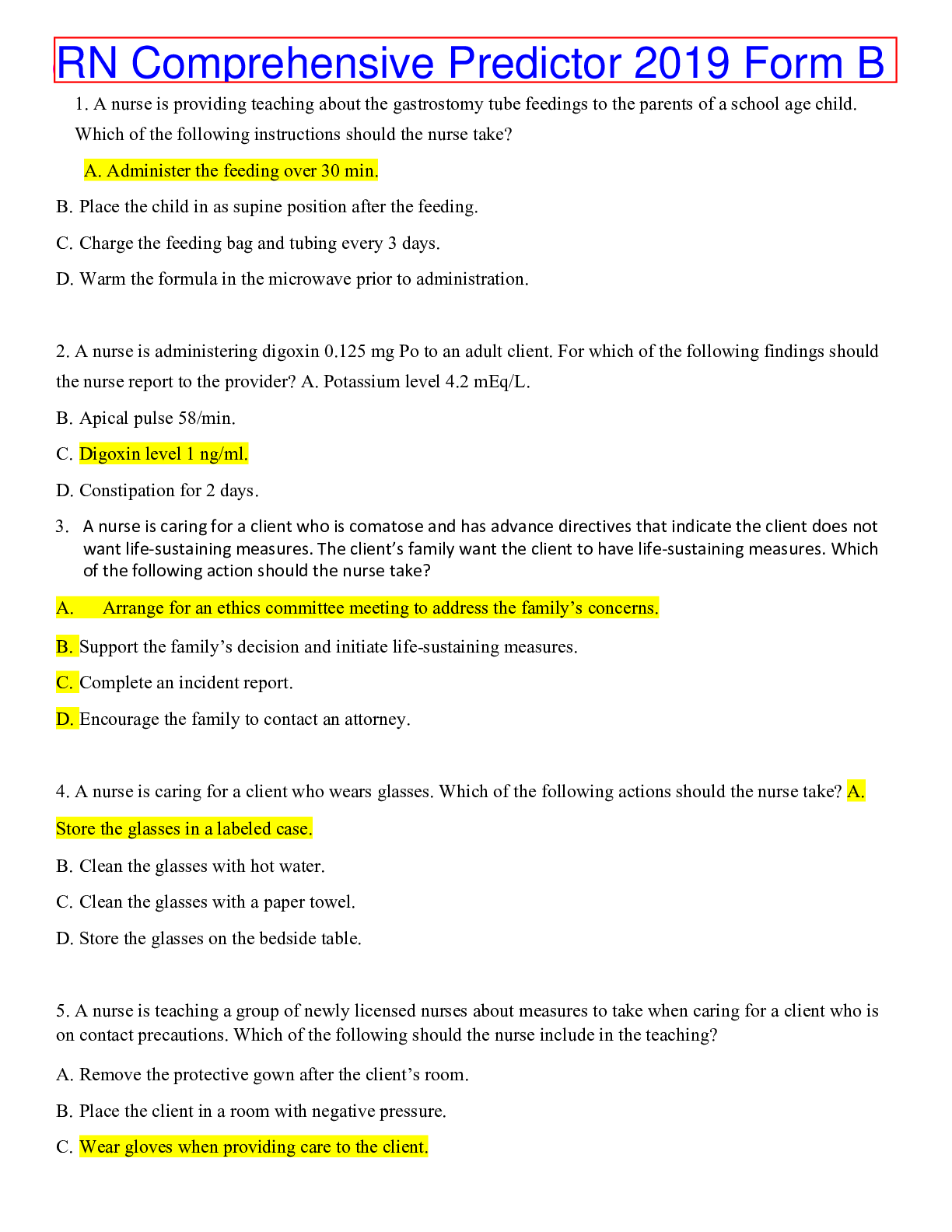Health Care > EXAM > PSYCHOLOGY FINAL EXAM PRACTICE / Verified Questions & Answers (All)
PSYCHOLOGY FINAL EXAM PRACTICE / Verified Questions & Answers
Document Content and Description Below
PSYCHOLOGY FINAL EXAM PRACTICE / Verified Questions & Answers 1. Caroline is receiving treatment for depression. She believes that losing her job means that she is a failure. Her therapist, Dr. Cla... rk, teaches her to challenge this belief by having Caroline list other areas of her life where she has been successful. Which of the following types of therapy best describes Dr. Clark’s approach? a. psychodynamic therapy b. Beck’s cognitive therapy c. Rogers’s client-centered therapy d. Maslow’s hierarchical therapy 2. Since David’s diagnosis of bipolar disorder, he has noticed that his family and friends treat him differently. This phenomenon can be best explained by ___. a. the biopsychosocial model. b. labeling theory. c. somatogenesis. d. learned helplessness. 3. Some theorists believe that there are unwritten laws that govern our behavior, and any behavior that is contrary to these laws is seen as “abnormal.” This is called ___. a. residual rule-breaking. b. shaping. c. a double bind. d. the diathesis-stress model. 4. Sonya’s biological family has a history of schizophrenia. However, Sonya was adopted at a very young age and had a very healthy upbringing. The diathesis-stress interaction would predict which of the following regarding the probability of Sonya developing schizophrenia? a. it runs in her family so she will eventually develop schizophrenia. b. with the continuation of good environmental conditions, she is unlikely to develop schizophrenia. c. she was adopted away from the schizophrenic family so she will not develop schizophrenia. d. she will develop schizophrenia if she comes into contact with her biological family. 5. Samuel is a 6-year-old boy whose teachers’ complain that he is has difficulty in the following areas: sustaining attention, sitting still, and resisting urges to do other things in class. Taken together, these are classic symptoms of which disorder? a. conduct disorder b. dysthymia c. attention deficit-hyperactivity disorder d. learning disorder 6. Jamica is a 17-year-old female who is terrified of gaining weight despite the fact that she is 5’6” and weighs only 90 pounds. In an attempt to avoid gaining weight, Jamica only allows herself to eat lettuce and five saltine crackers each day. Which disorder best represents Jamica’s symptoms based on the information given? a. compulsive personality disorder b. bulimia nervosa c. major depression d. anorexia nervosa [Show More]
Last updated: 2 years ago
Preview 1 out of 51 pages
.png)
Buy this document to get the full access instantly
Instant Download Access after purchase
Buy NowInstant download
We Accept:

Reviews( 0 )
$18.00
Can't find what you want? Try our AI powered Search
Document information
Connected school, study & course
About the document
Uploaded On
Jul 29, 2021
Number of pages
51
Written in
Additional information
This document has been written for:
Uploaded
Jul 29, 2021
Downloads
0
Views
90






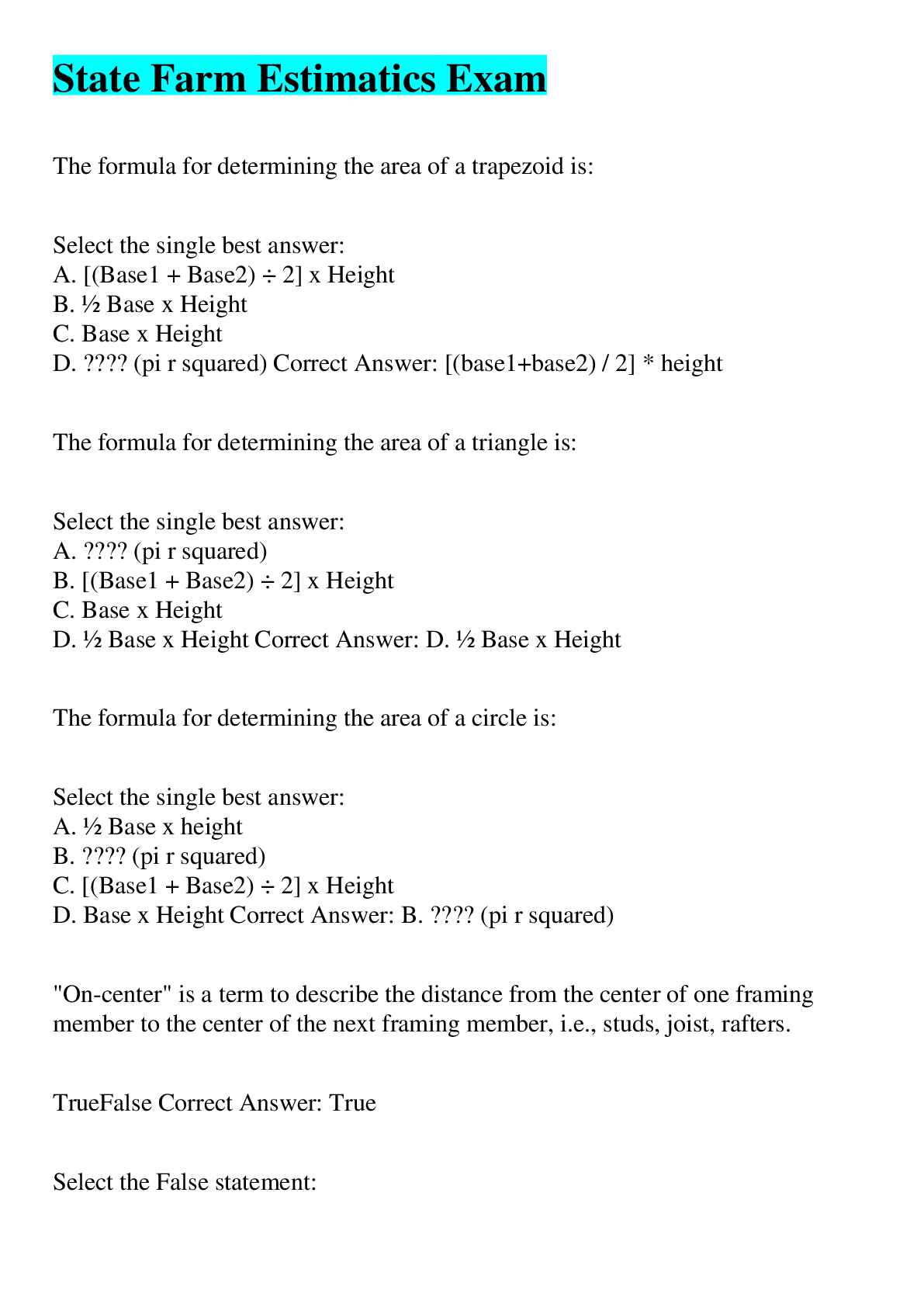
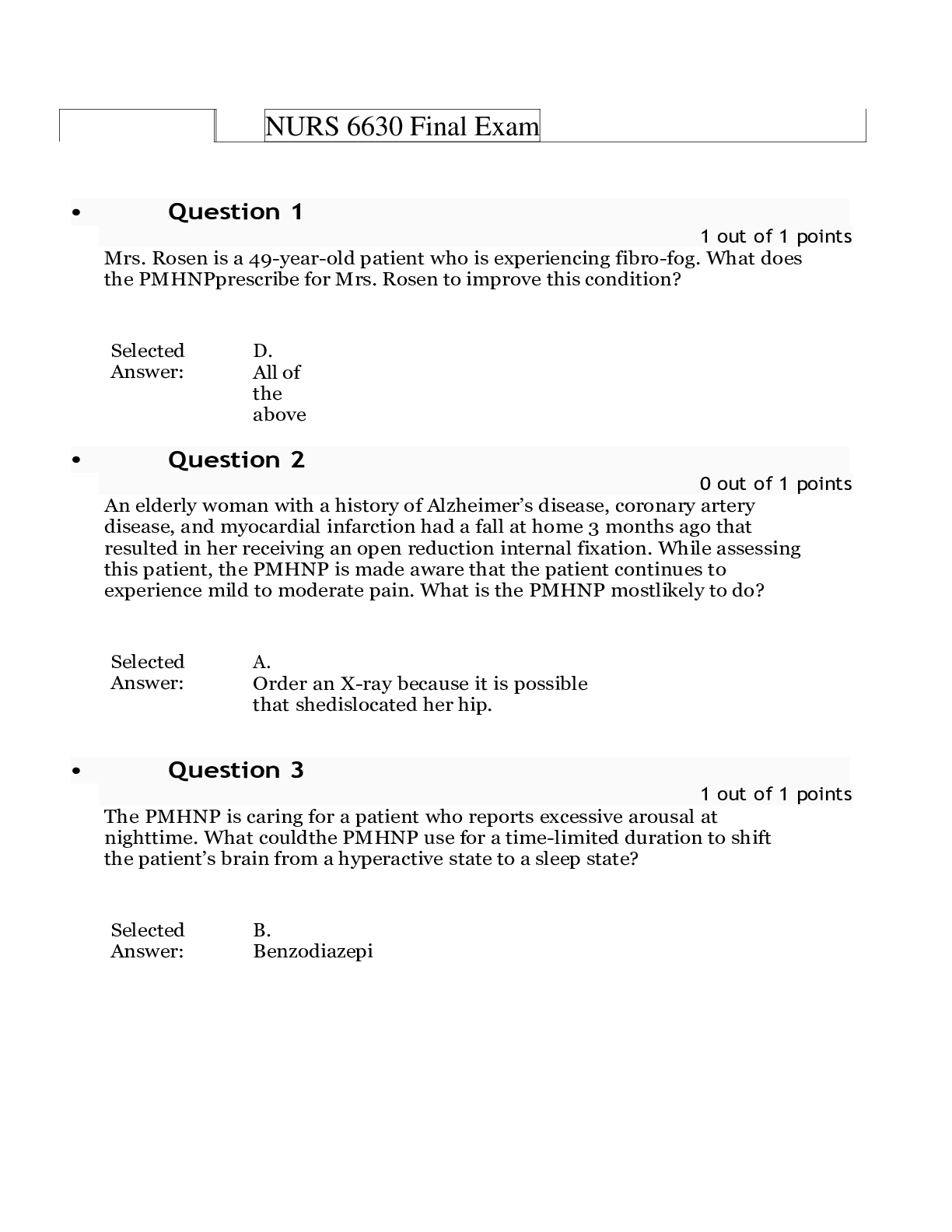

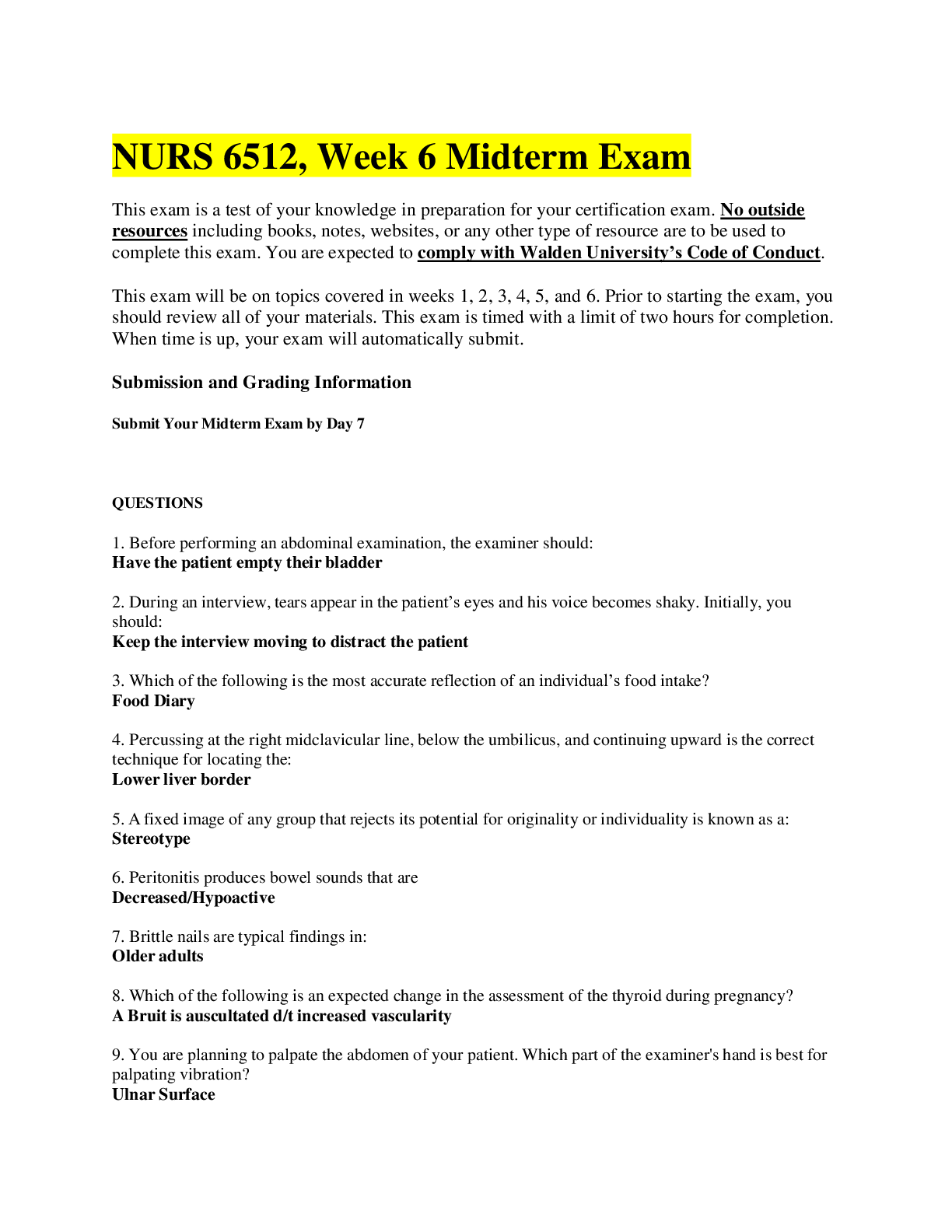


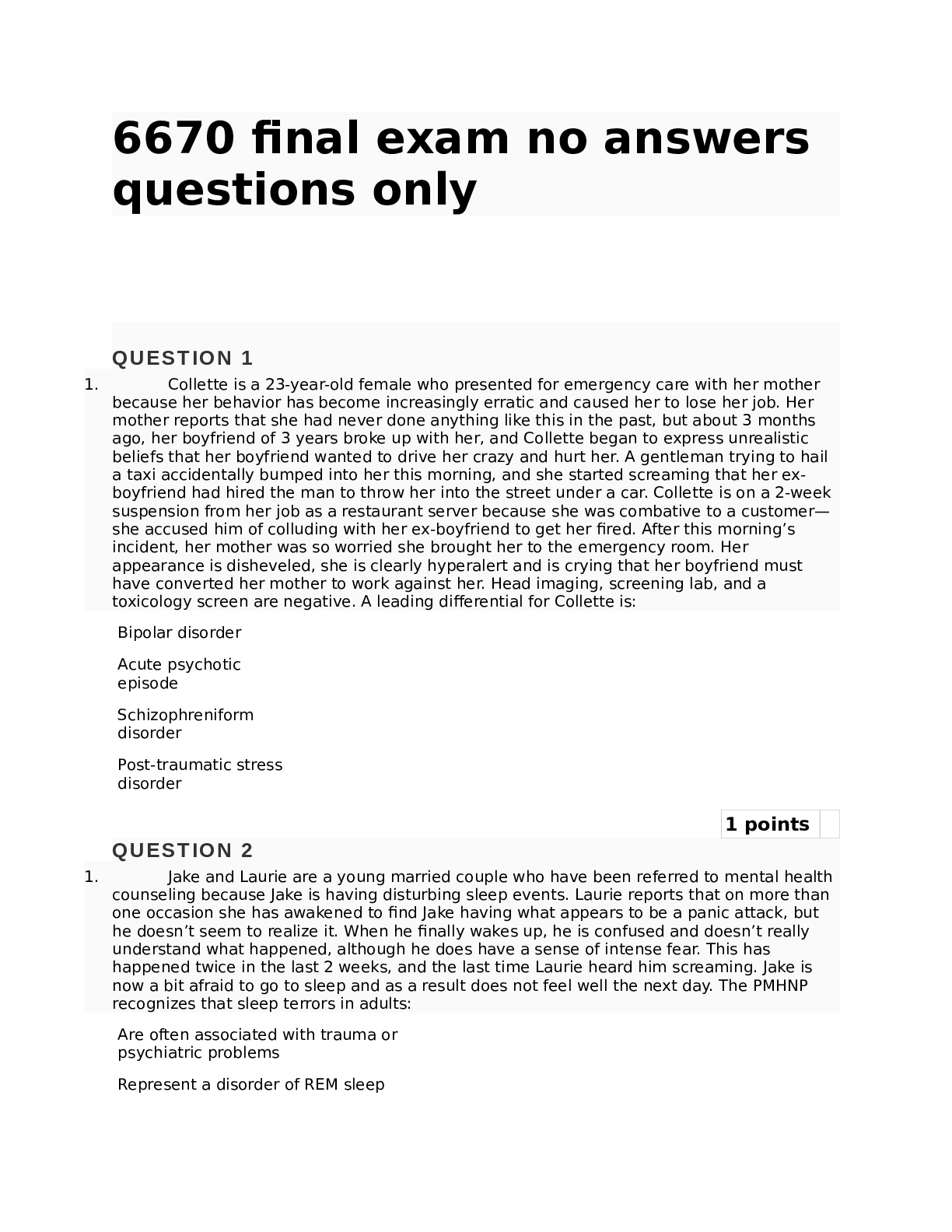

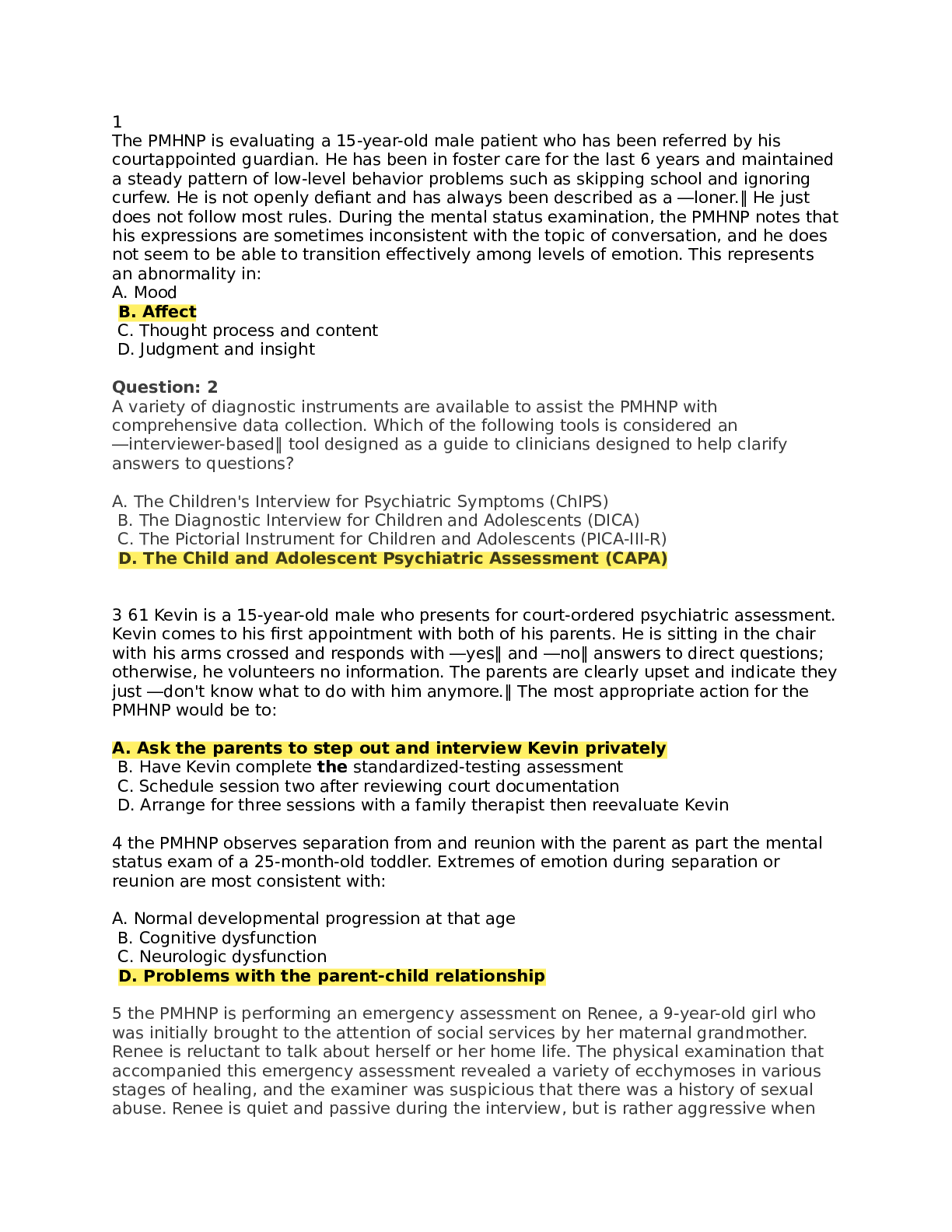
.png)

 (1).png)
 (1).png)
.png)
